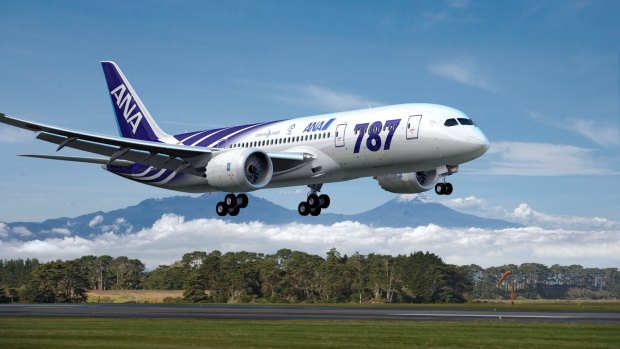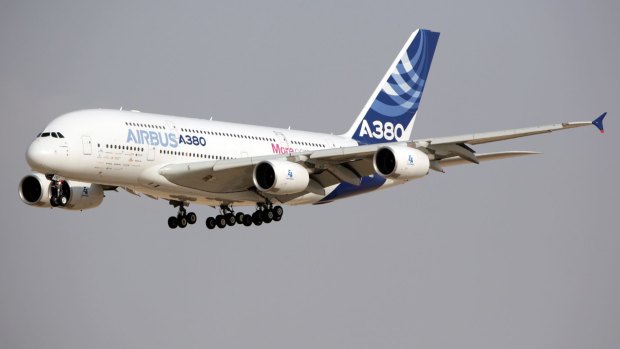This was published 5 years ago
Why do Boeing plane models always start with a 7? Aircraft model numbers explained
By Michael Gebicki
Aircraft types are known by a kind of shorthand every flyer knows. Tell anyone your next trip is aboard an A380 or a 747 and they should know what you're talking about, but is there any rhyme or reason for the way aircraft manufacturers name their aircraft? Why does every Boeing you've ever sat in probably start and end with the number 7? And why do Airbus models always seem to start with a 3?
But Boeings didn't always start with the number 7. Some early aircraft were known as the Model 40, Model 80, Model 247 and the glorious pre-World War II Boeing Model 307 Stratoliner, the first commercial aircraft with a pressurised cabin. Even the heavy bombers that Boeing built for the US military during the war were originally designated the same way. The B-17 Flying Fortress was Model 299 while the B-24 Liberator was known within Boeing as Model 32.
Boeing and the magic number seven
In the postwar period Boeing shuffled the deck and reclassified its aircraft, giving each category three-digit numbers. A 300 or 400 number denoted a propeller-driven aircraft, 500 was for turbine-powered aircraft, 600 for rockets and missile products and 700 for jet aircraft.
So why was the first Boeing jet aircraft known as the 707 rather than the 700 when it first took to the air in the 1950s? Because Boeing's marketing department intervened, and just as 007 sounds better than plain old 7, 707 sounds better than 700. So taken was Boeing with the number 7 that the company has stuck with it ever since, starting and ending each of its jet aircraft type with that number, a corporate lucky charm.
Since that time it's been a steady progression for Boeing aircraft, from the 727 of the 1960s right up to the 787 Dreamliner, although the airline skipped a beat with the narrow-bodied, short-range 717, which only entered commercial service in 1999, well after Boeing's 777.
Each of those models is further broken down into sub categories with a dash commonly used to separate the successive designs. Early-model Boeing 707s were designated the 707-120, followed by the shortened, longer-range 707-138, the stretched 707-320 and a short-range, smaller iteration, the 707-720, among several others.
Some of those aircraft types have stood the test of time better than others. The 737 carried its first passengers 50 years ago yet it's still alive and well. The most successful airliner ever built, the 737 has been around so long it's run out of numbers. After the 737-900, Boeing launched the 737 MAX series. Latest version is the 737 MAX 10, expected to begin commercial operation in 2020, with more than 400 on order.

Credit: Boeing
The most recent Boeing to roll off the production line is the ground-breaking 787 series, in commercial operation since 2011. Latest variant is the 787-10, a stretched version of the 787-9, which is itself a longer, stronger variant of the original 787-8. The 787-10 only entered service in April 2018, in Singapore Airlines paint, first seen in Australian skies on one of the airline's daily Perth-Singapore services.
Boeing has been working on designs for a new mid-size, twin-engine aircraft type for several years. To be known as the 797, the aircraft is projected to carry its first paying passengers in 2025. What happens to the numbers after Boeing finally rolls out the 797 is anyone's guess, but the 800s offer plenty of blue sky.
Airbus flies with three

Credit: Bloomberg
All Airbus aircraft begin with the letter A, in most cases followed by a three-digit number beginning with a 3. The exception is the A220, sold by Airbus but built by Canada's Bombardier Aerospace and previously known as the CSeries.
See: Airbus unveils its 'new' series of planes, the A220s
The original Airbus aircraft was the A300, so named because it was designed to seat 300 passengers.
Ever since, Airbus has added another 10 to each successive model – the A310 followed by the A320, right up to the A380 with a gap between that aircraft and the A350 to allow for the possibility of aircraft type sized to slot in between the A350 and the superjumbo A380. Airbus also adds or subtracts single digits to identify variants of the aircraft type, so the A318 and A319 are shorter variants of the A320 while the A321 is longer.
Russian aircraft builders Ilyushin and Tupolev both designate all their aircraft with a two or three-digit number, with no clear separation between military, transport and civilian aircraft. The Il-96 is a long-haul widebodied airliner while the Il-102 was an experimental ground attack military aircraft. The Tu-234 is a twin-engine mid-range passenger aircraft while the Tu-160 is a swing-wing strategic bomber, deployed recently against targets in Syria.
Sign up for the Traveller newsletter
The latest travel news, tips and inspiration delivered to your inbox. Sign up now.